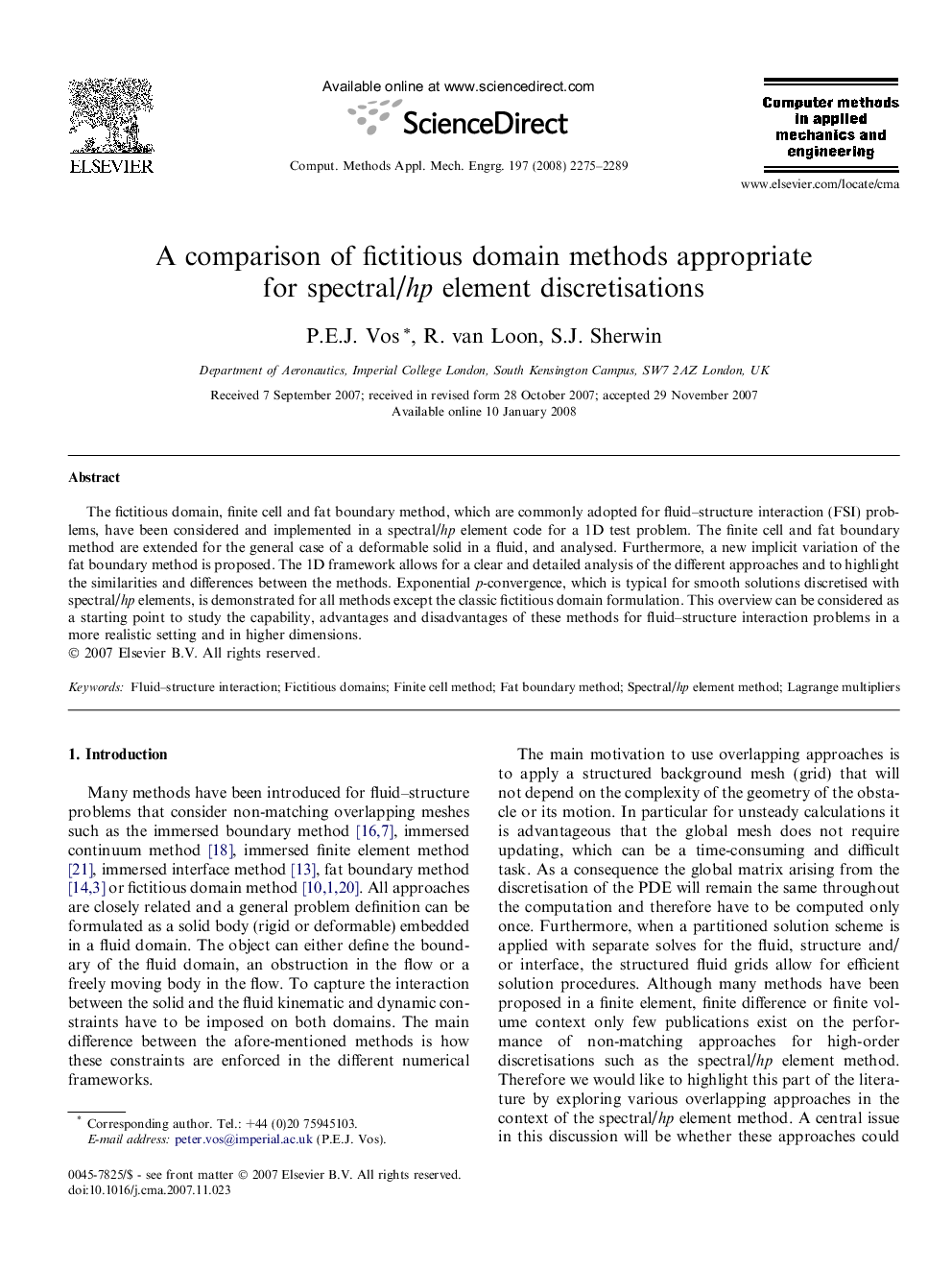| Article ID | Journal | Published Year | Pages | File Type |
|---|---|---|---|---|
| 499722 | Computer Methods in Applied Mechanics and Engineering | 2008 | 15 Pages |
The fictitious domain, finite cell and fat boundary method, which are commonly adopted for fluid–structure interaction (FSI) problems, have been considered and implemented in a spectral/hp element code for a 1D test problem. The finite cell and fat boundary method are extended for the general case of a deformable solid in a fluid, and analysed. Furthermore, a new implicit variation of the fat boundary method is proposed. The 1D framework allows for a clear and detailed analysis of the different approaches and to highlight the similarities and differences between the methods. Exponential p-convergence, which is typical for smooth solutions discretised with spectral/hp elements, is demonstrated for all methods except the classic fictitious domain formulation. This overview can be considered as a starting point to study the capability, advantages and disadvantages of these methods for fluid–structure interaction problems in a more realistic setting and in higher dimensions.
